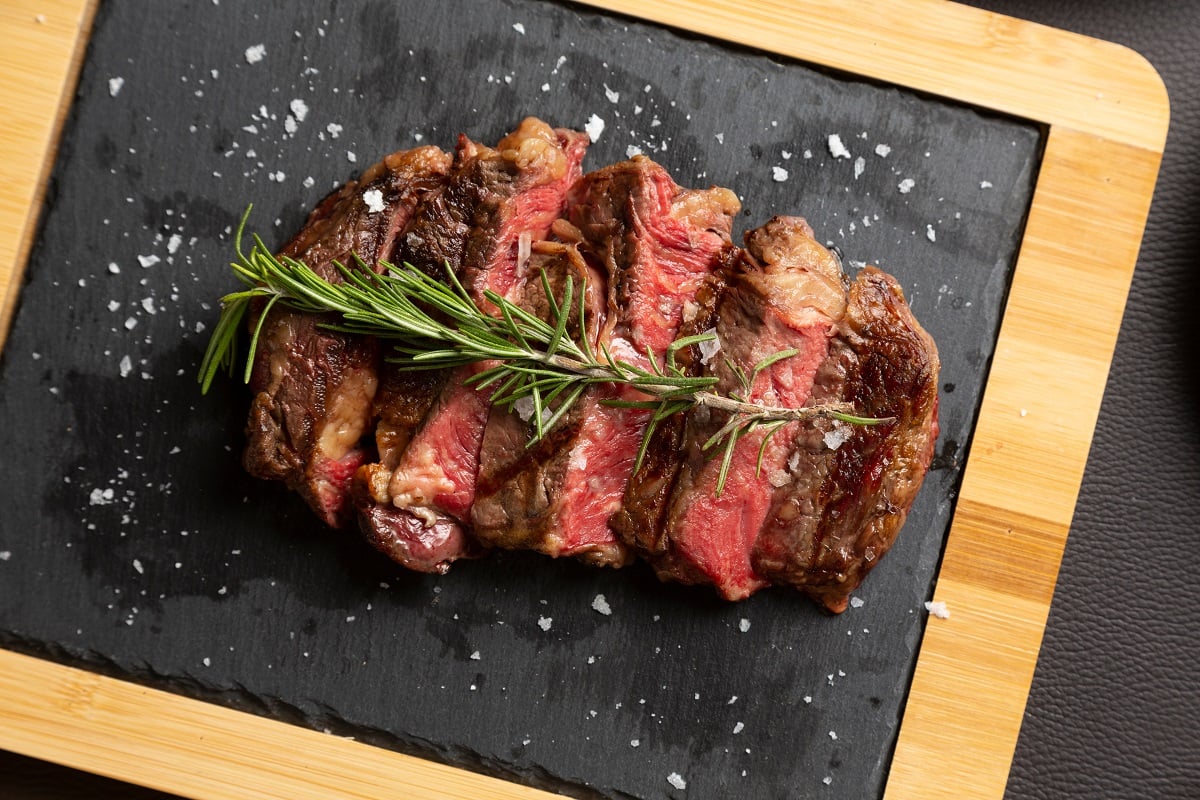When it comes to the best cuts of beef, Argentina takes the world’s number one spot. Of the country’s culinary delights, Bife de Chorizo is a steak aficionado’s dream. This rich, juicy, and full-flavored cut is a favorite in Argentine steakhouses, or parrillas, and a must-try for anyone who loves high-quality beef. In this article, we’ll explore the origins, preparation, and secrets to making the perfect Bife de Chorizo at home.

What Is Bife de Chorizo?
Not named after the Spanish sausage chorizo, Bife de Chorizo is actually a boneless sirloin steak made from the striploin cut. The striploin cut is prized for its tenderness, abundant marbling, and phenomenal beefy flavor. It is usually served thick, even bordering on over an inch in thickness, so it is best prepared for grilling or searing.
Origins of Bife de Chorizo
Argentina is renowned for its asado (barbecue culture), in which beef is the star. The country’s vast Pampas grasslands are ideal for cattle farming, resulting in some of the world’s finest beef. Bife de Chorizo has now become a hallmark dish in Argentine cuisine, prepared in homes and restaurants, topped with chimichurri sauce and served alongside crispy fries or salad.
How to Select the Best Cut
For the optimum Bife de Chorizo, consider the following when purchasing your beef:
Marbling: The steak needs a good marbling of intramuscular fat for juiciness and taste.
Thickness: At least 1.5 inches (4 cm) thick is ideal to have the right combination of blackened crust and juicy interior.
Grass-fed vs. Grain-fed: Argentine beef is generally grass-fed, which produces a leaner but flavorful steak with a firmer texture.
Authentic Bife de Chorizo Recipe
Ingredients:
2 Bife de Chorizo steaks (striploin, at least 1.5 inches thick)
2 tbsp coarse sea salt
1 tbsp freshly ground black pepper
2 tbsp olive oil (optional for searing)
2 cloves garlic (optional, for added flavor)
Fresh rosemary or thyme (optional)
Instructions:
1. Preparing the Steak
Remove the steaks from the refrigerator at least 30 minutes ahead of cooking time to allow them to acclimate to room temperature.
Well-season both sides with black pepper and coarse sea salt. Don’t shy away from the use of salt—it brings out the natural flavor of the steak.
2. Grilling on a Grill (Traditional Method)
Heat your grill up high (450–500°F or 230–260°C).
Put the steaks on the grill and cook to medium-rare for 4–5 minutes per side. Vary the time based on your desired level of doneness.
Let the steak rest for 5 minutes before cutting into it to enable the juices to redistribute.
Alternative: Cooking with a Cast-Iron Skillet
Preheat a cast-iron skillet to high heat and add a few drops of olive oil.
Sear the steak 3–4 minutes per side to achieve a rich golden crust.
Lower heat, add garlic and fresh rosemary, and baste with rendered fat.
Let it rest for 5 minutes before serving.
Serving Suggestions
Bife de Chorizo is traditionally served with:
Chimichurri Sauce: A fresh mix of parsley, garlic, olive oil, vinegar, and red pepper flakes.
Papas Fritas: French fries or roasted potatoes, crispy.
Ensalada Criolla: A simple salad of fresh tomato and onion, dressed with olive oil and vinegar.
Malbec Wine: Argentina’s iconic red wine, which complements the steak’s rich flavors perfectly.
Expert Tips for the Perfect Steak
Use coarse salt: Fine salt melts too fast and won’t form the same crusty outside.
Let it rest: This keeps the juices from flowing out when cutting.
Don’t overflip: Overflipping prevents the crust from forming properly.
Grill on wood or charcoal: For a true Argentine flavor, grill over wood-fired grills for a smoky depth of flavor.
Final Thoughts
Bife de Chorizo captures all that is great about Argentine food—good beef, minimal seasoning, and masterful grilling. Whether you cook it on a classic parrilla or in a cast-iron skillet, this steak will not disappoint with its rich flavors and tender melt-in-your-mouth texture. Give this recipe a try at home, serve it with a glass of Malbec, and taste the real Argentina!

Leave a Reply